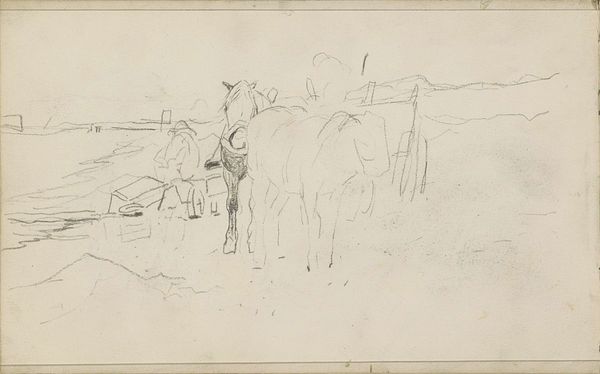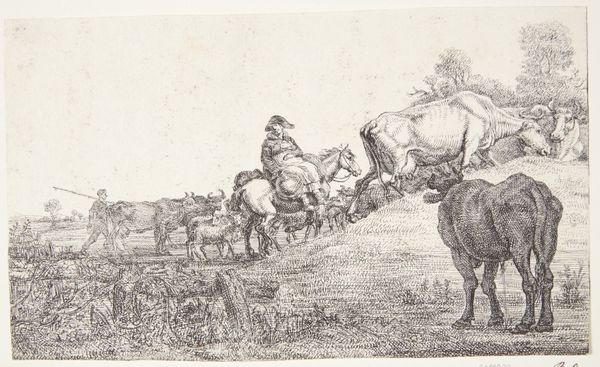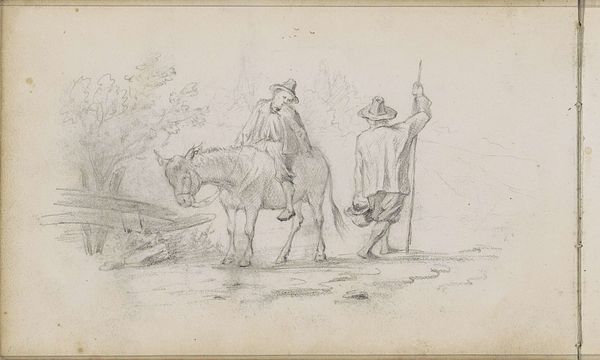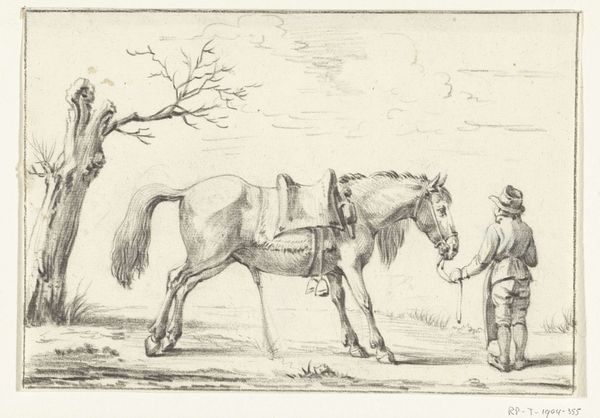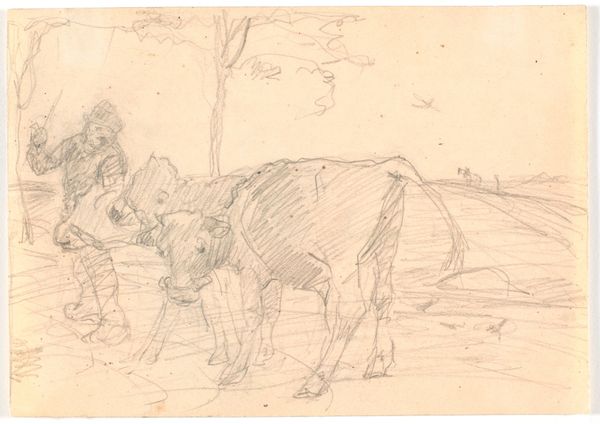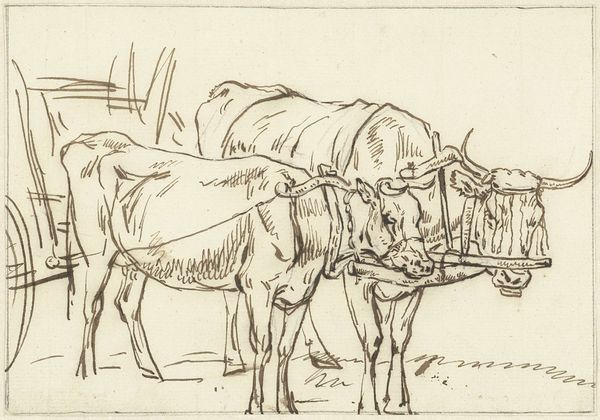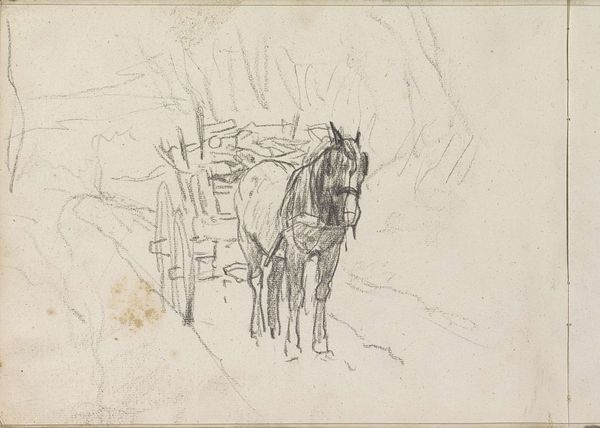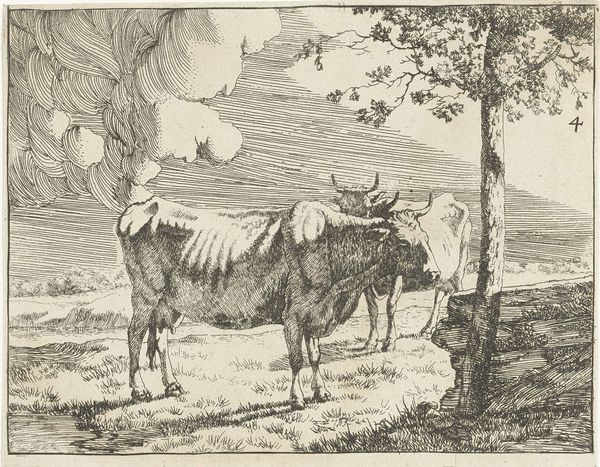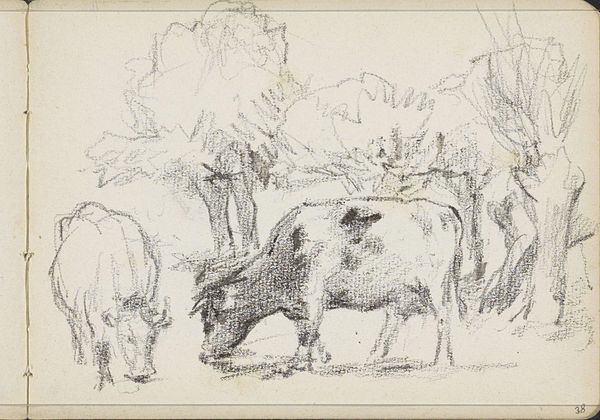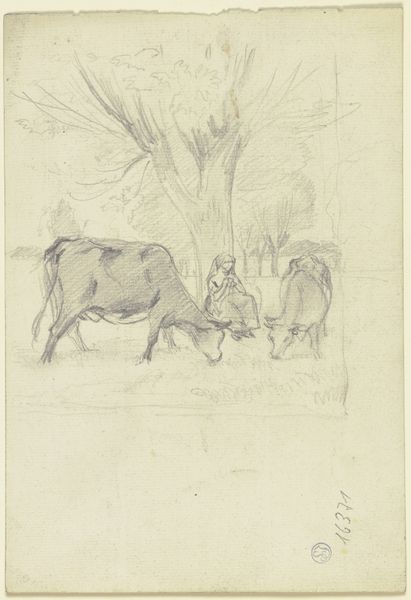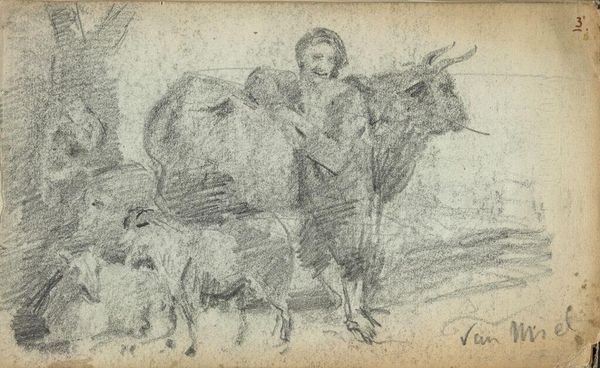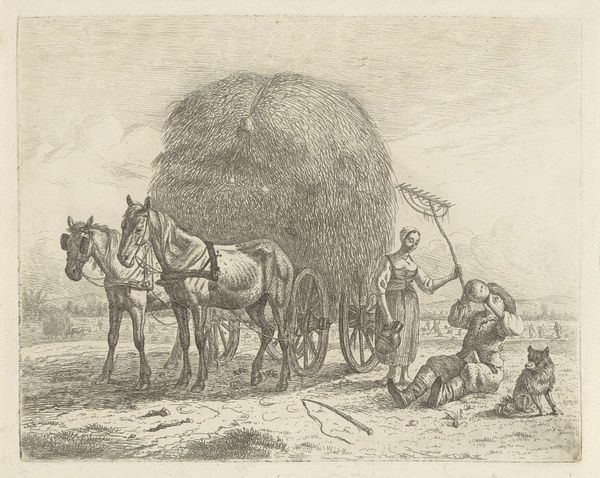
#
light pencil work
#
pen sketch
#
pencil sketch
#
personal sketchbook
#
ink drawing experimentation
#
pen-ink sketch
#
pen work
#
sketchbook drawing
#
sketchbook art
#
initial sketch
Copyright: Rijks Museum: Open Domain
Editor: This is "Os voor een hooiwagen te Boekel," a sketch by Willem Cornelis Rip, created sometime between 1866 and 1922. It’s a simple drawing in pencil. I find the image peaceful but a bit sad, focusing on labor and the relationship between people, animals, and the land. What do you see in this piece? Curator: What immediately strikes me is how this unassuming sketch can open up conversations about class, labor, and the rural experience in the Netherlands during this period. The ox, the hay wagon, the figure accompanying them – they’re all elements tied to agricultural production and a specific social stratum. How might this image speak to the power dynamics inherent in agrarian societies? Editor: That's a great point. It highlights how fundamental these workers and animals were. Is Rip trying to bring them into a different light? Curator: Precisely. Sketches like this offer invaluable insight into the lives and conditions of those often overlooked in grand narratives. The very act of the artist choosing this subject is a form of bearing witness, of challenging the dominant representation of society. It subtly questions who and what is deemed worthy of artistic attention. What might the inclusion of such images in museums do to disrupt conventional historical narratives? Editor: It could encourage people to look more deeply into everyday lives rather than just political ones. I had only really considered this a landscape sketch! Curator: It's more than a landscape. This drawing encapsulates a relationship: that between humanity, the animal kingdom, and nature that exposes the intersections of labor, identity, and perhaps even exploitation. The simplicity is deceptive. What do you make of the single human figure present? How does this person’s presence affect your understanding of the drawing’s narrative? Editor: It reinforces a narrative of loneliness. It makes you consider that the person’s life is intrinsically linked to hard work. Now, the image feels much more critical of that relationship! Curator: Exactly. By situating this work within a socio-political framework, we can unearth layers of meaning often missed in conventional art historical analysis. Editor: Thanks! I learned a lot about how art is a social statement. Curator: Likewise. Art challenges existing historical narratives.
Comments
No comments
Be the first to comment and join the conversation on the ultimate creative platform.
